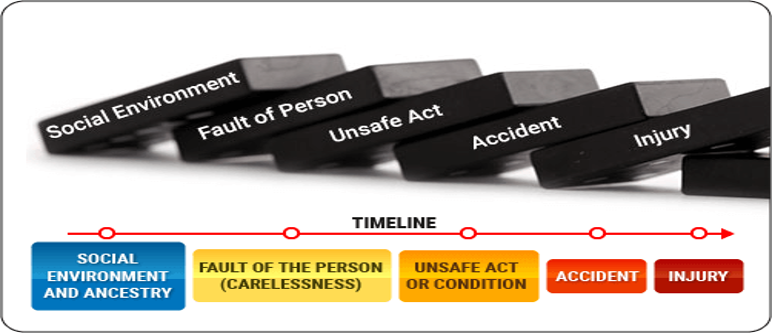In the world of workplace safety, preventing injuries is about far more than ticking compliance boxes. It’s about understanding human behaviour and predicting how people are likely to act under pressure—especially when deadlines loom.
Over recent weeks, I’ve observed several instances where workers put their lives at risk simply because they were trying to speed up the job. One particularly shocking case involved someone working at a height of four metres on a tower scaffold—without any handrails on the working platform. A fall from that height would almost certainly result in death.
This wasn’t an isolated case of recklessness—it was the product of a wider cultural issue. According to Heinrich’s Domino Theory, accidents are rarely random. Instead, they result from a chain of interconnected factors:
- A person’s social environment and upbringing
- A personal fault or misjudgement
- An unsafe act or condition
- The accident itself (e.g., fall, crush, electrocution)
- The resulting injury or death

Each factor is like a domino: knock one over, and the others are likely to follow. The key to preventing incidents lies in breaking that chain before it gets to the accident stage.
This is where leadership matters. The Managing Director and board are the primary influencers of workplace culture. It’s their responsibility to foster a positive and proactive safety culture—one in which unsafe acts or conditions are not ignored but addressed immediately.
Culture doesn’t grow overnight. It develops slowly, shaped by shared attitudes, beliefs, and behaviours. But when health and safety become a collective value—when no one walks past an unsafe condition without taking action—the results are tangible: fewer incidents, fewer injuries, and fewer tragedies.
Take that scaffold incident: more than 20 workers, including the site manager, saw what was happening and did nothing. This wasn’t a failure of rules or regulations—it was a failure of culture.
If we’re serious about preventing harm, we must stop rewarding speed over safety. We must challenge unsafe practices—even when it’s uncomfortable. And we must lead by example, every day.
Because when we rush to meet deadlines without thinking about safety, we aren’t saving time—we’re gambling with lives.�
Need help improving your site’s health and safety culture? At Compass HSC, we work with directors, managers, and site leaders to instil a safety-first mindset across every level of your organisation. Whether you need a culture audit, tailored training, or a clear roadmap for regulatory compliance and behavioural change, we can help.
📞 Call us today on (01253) 735755 or use the form below to arrange a free consultation.
Build a culture where no one walks past an unsafe act—and everyone gets home safe.

